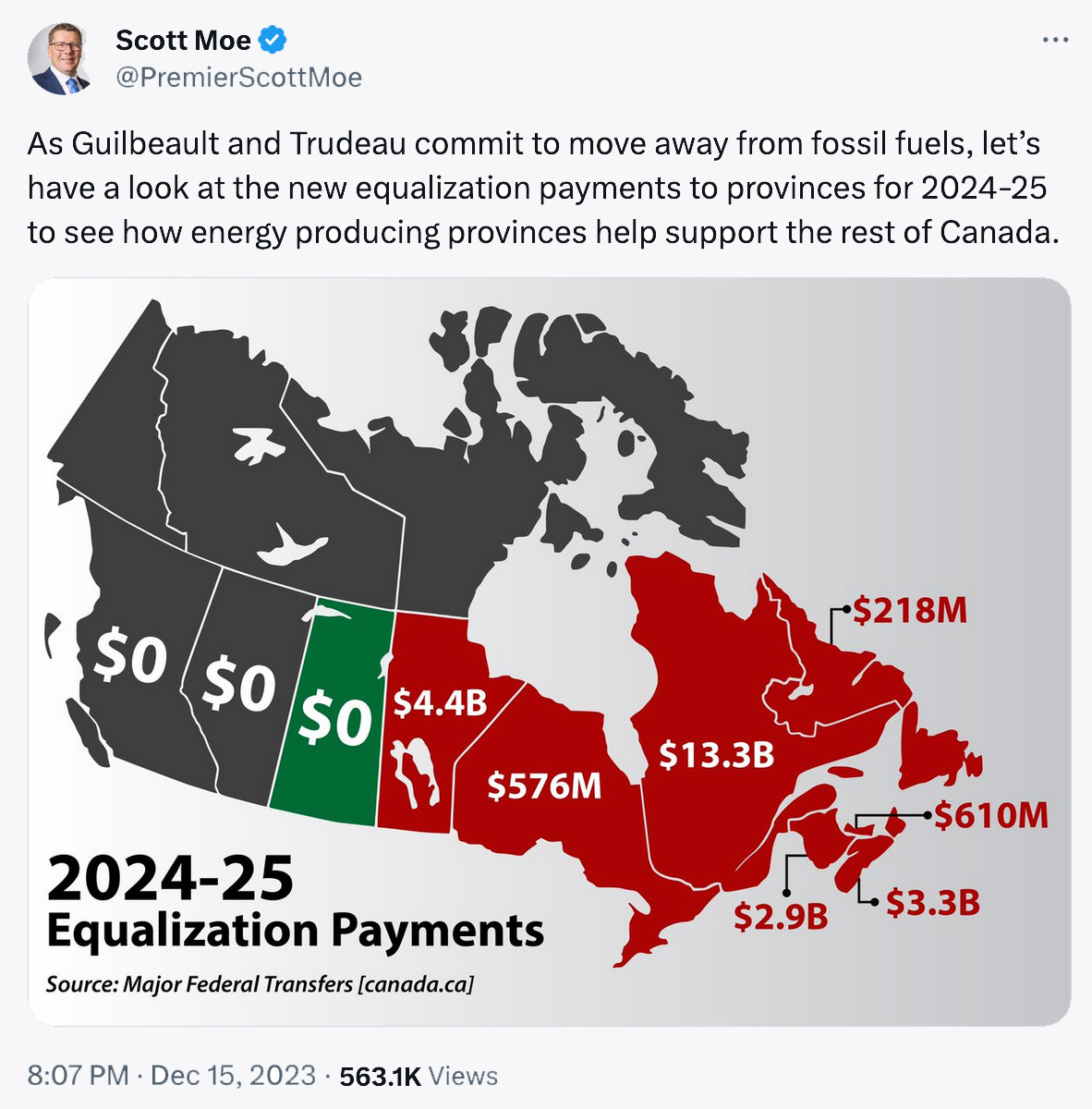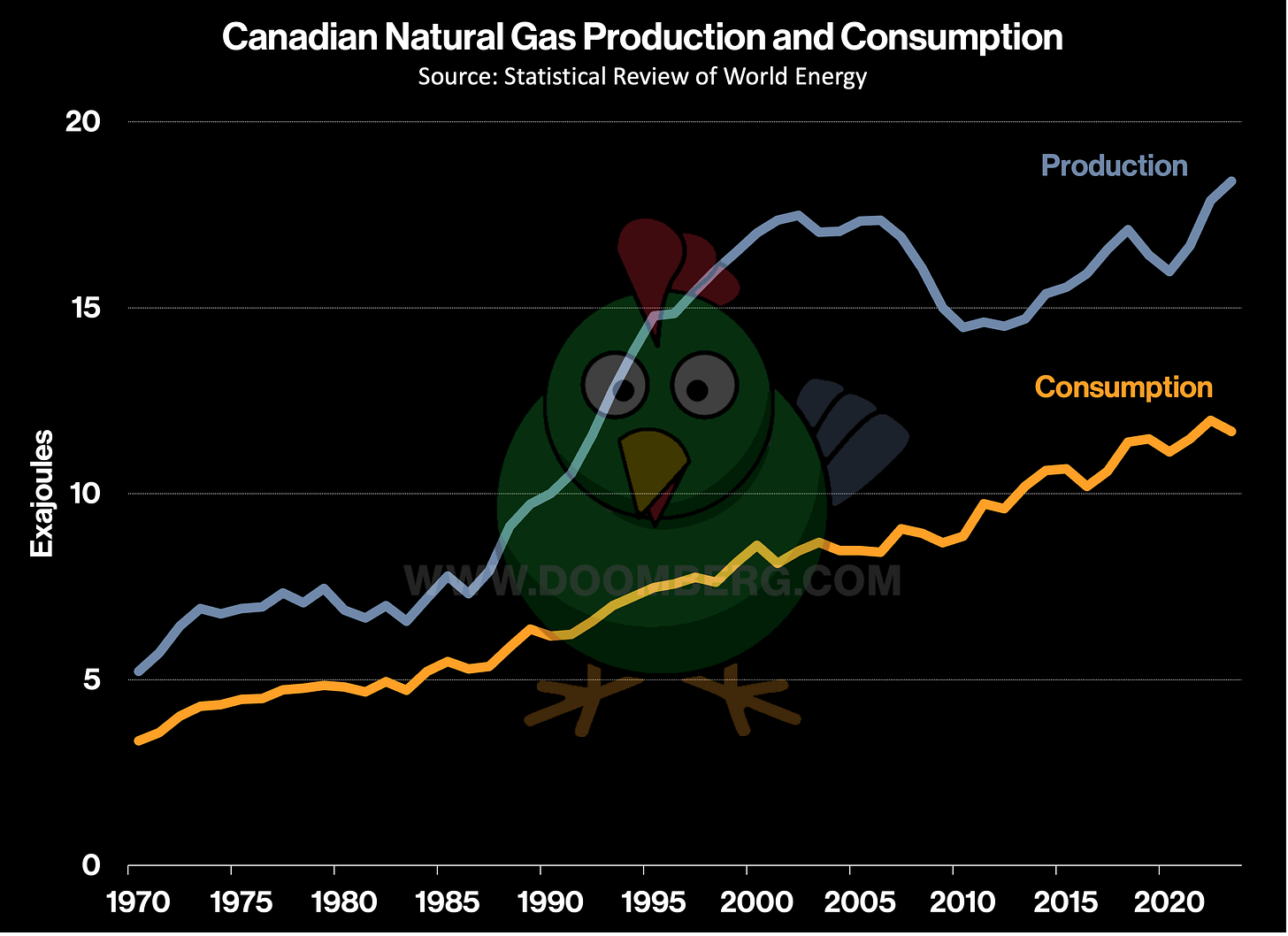After Trudeau
Canada’s energy-rich Western provinces consider their options.
“The essential ingredient of politics is timing.” – Pierre Elliot Trudeau
On October 30, 1995, Canada came within 54,288 votes of splintering into multiple countries. Residents of the French-speaking province of Quebec narrowly voted down a proposal to declare independence for the second time in 15 years. More than 93.5% of registered voters showed up to the polls, and the difference between “Yes” and “No” was less than the number of invalid or blank ballots, an outcome that raised more than a few suspicions on the losing side. Independence was strongly supported by older voters but resoundingly rejected by their younger counterparts. The passage of time makes this the high-water mark of the centuries-old Quebec sovereignty movement, although the issue still simmers near the surface of contemporary Canadian politics.
As the Freedom Convoy protests of 2022 made clear, the citizens of Quebec hold no monopoly on frustrations with Canada’s federal government. While resistance to continued Covid-19 mandates was the proximate cause of the uprising, anger at Ottawa’s policies generally has long riled conservatives in the country’s westernmost provinces, especially in Saskatchewan, Alberta, and parts of British Columbia (BC). One burr in this region’s saddle is Canada’s system of equalization payments, a constitutionally mandated program meant to address economic inequalities across provinces by redistributing federal revenues to those below the country’s average fiscal capacity. This tweet from Saskatchewan Premier Scott Moe captures the lament:
The basis of the economic outperformance of these provinces is energy, of course. Alberta has been blessed with some of the world’s largest hydrocarbon deposits, and local support for extracting them in an environmentally prudent manner remains high. The Alberta Heritage Savings Trust Fund—meant to preserve some of the profits from oil and gas development for future generations of Albertans—was recently valued at $23 billion, an impressive sum for a province with a population under 4.5 million. Support in Alberta for leaving Canada (and potentially even petitioning to join the US) is not insignificant, with polling data indicating that approximately 25-30% of voters would strongly consider secession.
When people think about western Canada’s energy, the heavy oils produced from the Athabasca tar sands and similar resources in Cold Lake or Peace River usually come to mind. Given the carbon intensity of developing these deposits, it would be easy to assume the region’s energy sector has seen its best days, with the combination of alleged peak oil demand and increased scrutiny on carbon emissions dooming its fate to a future of secular decline. The minority government of current Prime Minister Justin Trudeau has certainly worked to achieve this outcome, imposing a bevy of taxes and regulations on the sector and consistently pledging bold actions against future development at various climate summits. (To be fair, many on the progressive environmental left believe Trudeau is trying to have it both ways, approving critical infrastructure projects that enable production growth while speaking in platitudes to both domestic and international audiences.)
Even if one were to assume a difficult path for the region’s oil development in the decades ahead, the production of natural gas looks set to explode higher. Canada is already the fourth largest producer of the stuff in the world, behind the US, Russia, and Iran on the global leaderboard. British Columbia and Alberta account for roughly 98% of Canada’s natural gas production, exceeding national demand for as long as records have been kept.
A unique set of circumstances is assembling that might allow Canada to disrupt the global natural gas markets even further. With one of the largest and most economically lucrative gas fields in the world, the upcoming completion of massive and long-stalled infrastructure projects, easy access to energy-hungry markets in Asia, and a shifting political landscape that could see the Trudeau government replaced with a far more energy-friendly conservative regime, we are bullish Canadian natty. Let’s head north for the details.



